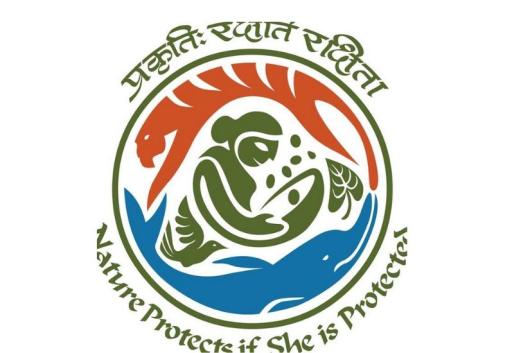The 11th meeting of the Conference of Parties (COP 11) to the Convention on Biological Diversity (CBD) took place October 8-19 in Hyderabad, India. Among the main themes addressed was the search for means to implement the Aichi Targets and the Nagoya Protocol on Access and Benefit Sharing, which were adopted in 2010 at COP 10 to serve as the new roadmaps to guide countries in the measures to be taken to halt biodiversity loss by the year 2020, since the 2010 target had already failed to be met. (1)
It was stated that there was a need to establish international indicators of compliance, and to build capacity for the application of guidelines and other similar mechanisms, primarily for the countries of the global South. But what was denounced by numerous environmental organizations because of its grave repercussions was the adoption of a revised and updated Strategic Plan for Biodiversity (http://www.cbd.int/sp/) resulting from the negotiations. This plan, which was to be the overarching framework on biological diversity for the entire United Nations system, declared the need for new and additional financial resources as a key element for the protection of biodiversity. Mentioned in particular was the need to explore “innovative financial mechanisms”.
From a neoliberal perspective, money is considered the most important mechanism for conserving biological resources, and under this same approach, money is used as the means of valuing environmental aspects of importance. This has numerous implications, which the CBD Alliance (2) has been studying and disseminating in documents prepared for the Nagoya summit in 2010 and the recent summit in Hyderabad. Among the financial mechanisms formulated are payment for environmental services, a green development mechanism, and biodiversity offsets. Advances have also been made in the attempts to place a monetary value on ecosystem services, as in the case of The Economics of Ecosystems and Biodiversity or TEEB (see WRM bulletins 175, 176 and 181), an initiative backed by the United Nations Environment Programme (UNEP).
The CBD Alliance reports stress the difficulty of placing a financial value on biodiversity for the purpose of marketing it, as well as the idea, linked to this, that one species or area of high biological diversity can be equivalent, from a monetary point of view, to another. Added to this are the consequences for land rights, as well as the danger of placing priority on one ecosystem “service” over another, based on profitability. (3)
In reality, in order to protect biodiversity, what is important is not so much the amount of financial resources but rather the quality and destination of financing.
In a report prepared for the CBD Alliance that focuses on financial mechanisms for biodiversity conservation (4), the authors quote the IUCN’s observation that a “vast pot of potential conservation finance” lies in the billions of dollars tied up in environmentally harmful subsidies, such as government fiscal policies that support agricultural practices that destroy forests and deplete water supplies.
Basically – and following a larger trend of moving governance and decisions away from governments and communities – the introduction of innovative financial mechanisms for biodiversity protection paves the way for the creation of market instruments that will deepen the privatization and commodification of goods that continue to form part of the commons. These will be new opportunities for profit for companies and even speculative capital, but false solutions for biodiversity loss, because they do not address the real causes of the problem, which are the destructive systems of production, trade and consumption. The Strategic Plan for Biodiversity 2011-2020 also opens the door to financial speculation, which is expanding in search of all possible spaces that were previously out of the reach of the market.
Nevertheless, a few positive recommendations can be found. BiofuelWatch and the Global Forest Coalition welcomed the fact (5) that COP 11 had acknowledged the SBSTTA recommendation to review and, where necessary, withdraw subsidies and other incentive schemes for biofuels and other economic sectors that cause harm to biodiversity. It further recognized that subsidies and other incentives for biofuel crops can be significant drivers of the expansion of industrial monoculture plantations for this purpose.
In the meantime, it is hoped that, in the words of Helena Paul of Econexus, these recommendations will encourage the European Union “to abolish all support for large-scale industrial bioenergy.”
Some countries expressed the need to change models of production. As reported by the Brazilian organization Terra de Direitos, Bolivia denounced that financial mechanisms for biodiversity conservation such as REDD+ are nothing more than neo-colonialist policies that do not genuinely seek to protect the environment, because they maintain unchanged the production model of the global North, which has caused so much damage to the environment and communities in the South. (6)
This article is based on information from the following sources:
(1) For a synthesis of the Aichi Targets (in Spanish), see: “Guía de la biodiversidad. Las metas de Aichi para periodistas y otras especies en extinción”, Ecologistas en Acción, at http://www.ecologistasenaccion.org/IMG/pdf/guia_de_la_biodiversidad.pdf
(2) The Convention on Biological Diversity Alliance (CBD Alliance) is a network of activists and representatives from non-governmental organizations, community-based organizations, social movements and indigenous peoples’ organizations advocating for improved and informed participation in CBD processes. For more information visit: www.cbdalliance.org
(3) CBD Alliance documents: “Resource Mobilization (implementation of the strategy) and Financial Mechanisms”, at http://www.cbdalliance.org/storage/sbstta-wgri/cbda_briefing_wgri4_finances.pdf; “Finanzas, Instrumentos Económicos y Biodiversidad”, at http://www.wrm.org.uy/actores/CBD/COP10/Informativo2_LosTop10paralaCOP10.pdf; CBD Alliance COP 11 Briefing Notes, at http://www.cbdalliance.org/cop11-briefing-notes/
(4) “Civil society views on Scaling Up Biodiversity Finance, Resource Mobilization and Innovative Financial Mechanisms”, compiled by Simone Lovera and Rashed Al Mahmud Titimur for the CBD Alliance, at http://www.cbdalliance.org/storage/ifm/CBD%20Alliance%20Civil%20society%20views%20on%20Scaling%20Up%20Biodiversity%20Finance.pdf
(5) “Forest Groups Welcome Global Biodiversity Conference Call to Review Biofuel Subsidies and Incentives”, 19 October 2012, at http://globalforestcoalition.org/2474-forest-groups-welcome-global-biodiversity-conference-call-to-review-biofuel-subsidies-and-incentives#more-2474
(6) “11ª COP da Convenção sobre Diversidade Biológica: Dos debates para a ação concreta?”, Larissa Packer and Fernando Prioste, Terra de Direitos, at http://terradedireitos.org.br/biblioteca/11%C2%AA-cop-da-convencao-sobre-diversidade-biologica-dos-debates-para-a-acao-concreta-2/
